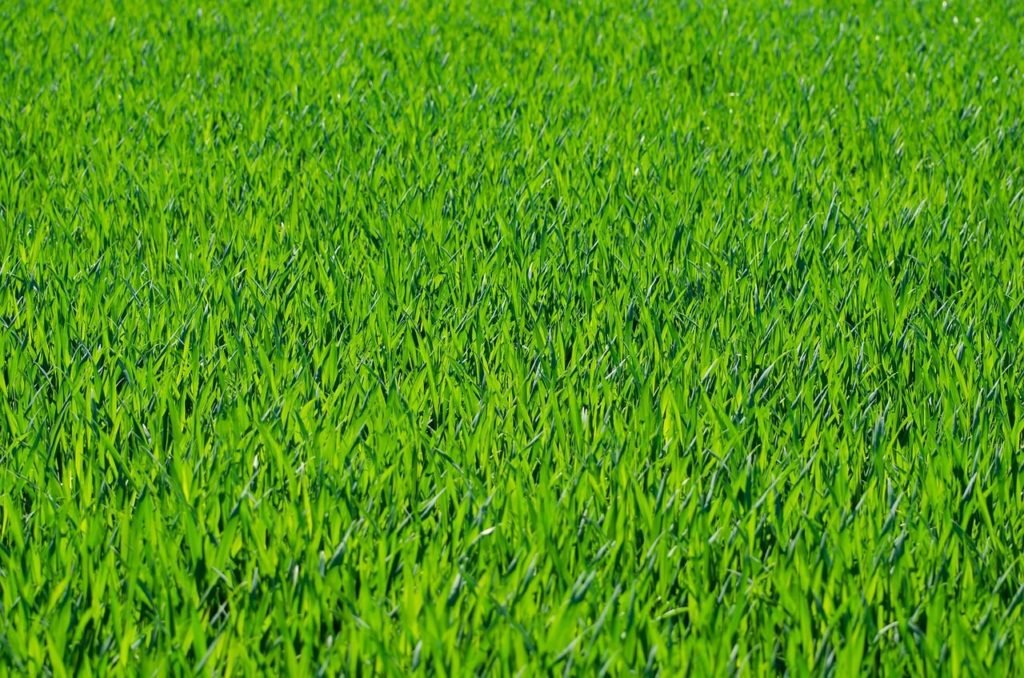Everyone loves to have a perfectly-manicured lawn. To get it, though, requires a good deal of work. You could hire a landscaping company to take care of it for you. But you might also decide (or have to) do it yourself. And mowing your lawn is one of the most regular tasks that has to be done to keep everything in tip-top ship.
Still, mowing the lawn is more than a matter of just starting up the mower and pushing. It requires the right tools, choosing the right time, and following a proper technique. Here we’ll set out a guide for what to use and when and how to use it so that you can have a beautiful lawn throughout the year!
Before You Get Started
To mow your lawn properly, you’ll first need to have the proper tools and make sure they’re in the proper conditions. Of course, that mostly means your lawn mower. There are various types of mower to choose from.
If you’re using a gas-powered mower, you’ll want to be sure that the tank is topped off. Keeping a small gas tank on hand is helpful. They’re generally available in sizes from one to five gallons. Just be sure to store them safely! Most lawnmowers hold less than a gallon of gas. Depending on the power of your mower and the size of your yard, you might need to refill even during a single cutting.
With an electric mower, it’s always good to be sure that the cord is in good shape. Any cracks or cuts in the insulation can be dangerous. Always be sure to use an outdoor-rated cord of the recommended gauge, too.
A sharp blade is important, too. You want to cut the grass, not beat it into submission with a blunt weapon. Fortunately, sharpening your lawnmower blade is something you only have to worry about once a year, normally.

Before starting up the mower, you’ll want to make sure the wheels are set to the right height. The proper mowing height can vary from season to season. Normally you’ll want to have the wheels set high and only cut off the top third of the grass blades.
There are several reasons for not cutting too deeply. First, longer grass means there’s more surface to absorb sunlight. That’s essential for the grass’s healthy growth. Also, it takes energy for the grass to grow. That energy is better spent on developing roots than repairing blades. Cutting also weakens grass, making it more susceptible to disease. Finally, shorter grass may help weeds prosper since more sunlight can reach unwanted seeds that have fallen on your lawn.
Safety First
Now that your tools are all set, be sure to mow safely.
Before you start up the mower, check your yard for any obstacles. Be sure to look out for rocks, branches, toys, or anything else that will get in the way.
Of course, be on the lookout for people, too – especially the little kind! Children may not realize how dangerous a lawnmower is or that it can throw small pebbles or sticks at high velocity. The same can be said for pets – it’s best to make sure they’re kept out of the way from anywhere they could be hurt. Even mowers with bags may occasionally allow something dangerous to slip by.
Keep in mind your vehicles, fence, and house when mowing too – as far as possible, don’t direct the mower in a way where it would toss pebbles toward anything you don’t want dented or scratched.
To Mulch or Not To Mulch
Mulching is a great way to recycle your grass clippings. Many lawnmowers offer a setting to cut the grass fine enough to be used as mulch, making it an easy process.
You may choose to allow the finely-cut grass to remain on your lawn to serve as mulch where it lies. This is a great alternative.
But you could also set it aside and use it as mulch for your flower or vegetable gardens. Since it holds moisture that will slowly seep into the ground, it’s great for keeping the ground damp. Proper mulching adds great nutrients to the soil, too!
If you’re going to save the clippings for mulching elsewhere other than the lawn itself, it’s easiest to use the bag attachment for your mower. If you don’t have a bag, just rake them up afterward!
When to Mow
Knowing how long your grass should be is the first thing you need to know when deciding when it’s time to mow. The easy answer is, “It depends.” The proper height depends on the type of grass. Those that thrive in colder climates, like Kentucky bluegrass, do best around 2 ¾” high, so you should cut them when they get to be 3 ¼”. Warmer-weather varieties, though, can have a broad range of optimal heights, anywhere from ¾” up to 3”. So be sure to read the bag of grass seed or research your particular lawn.
| Cold-climate grasses | Optimal Height |
| Bentgrass | 1/4 to 1 inch |
| Buffalo grass, blue grama, Bahia grass | 2 – 3 inches |
| Fine Fescue | 1-1/2 to 2-1/2 inches |
| Kentucky bluegrass | 1-3/4 to 2-1/2 inches |
| Ryegrass, annual and perennial | 1-1/2 to 2 inches |
| Tall Fescue | 2 – 3 inches |
| Warm-climate grasses | Optimal Height |
| Bermuda grass, common | 3/4 to 1-1/2 inches |
| Bermuda grass, hybrid | 1/2 to 1 inch |
| Centipede grass | 1 to 2 inches |
| St. Augustine grass | 1-1/2 to 2-1/2 inches |
| Zoysia grass | 1 to 2 inches for the standard breed, although some dwarf varieties can be mown shorter. |
Learn more about different types of grass
At the end of the season, as winter draws near, you might change your mowing habits some. When you think it’s nearly time for the last cutting of the year, try cutting it down to about 2”. You might try one more mowing, and you’ll know the grass has gone dormant when there are little to no clippings. The shorter grass preservers energy and keeps it from getting matted down by leaves and fall rains. That way it remains easier for water to reach the soil.
Of course, besides the lawnmower, you’ll probably want to have a rake handy as well as know how you’ll dispose of the grass. Often it can be left where it falls to help fertilize the ground. You might want to add it to your compost heap, though. If you need to dispose of it, be sure to have environmentally-friendly bags on hand to gather it up!
It’s important to find the right time of day to mow, as well. This is another way of guaranteeing healthy grass.
The first step is to avoid falling into a pattern. As we mentioned above, it’s important not to over-mow. Your grass is going to grow at different rates throughout the season, depending on how much water and sun it receives as well as its natural life cycle. While it might fit your schedule to do the chores the same time every week, that’s not best for the lawn. Sometimes you might have to mow it twice a week while during other periods it might go 10 days or two weeks without needing a trim.

Next, choose a time when the grass is dry. Dry grass stands straighter and allows the grass blade to get it to the proper height. At the same time, avoid mowing at the hottest time of day. That’s more stress on the grass and on you, too. Early evening, once it’s cooled down a bit, and on a day it hasn’t rained is usually best. Remember that grass can be damp in the morning from dew!
As far as time of year, spring through fall is cutting season. Once the grass has begun to grow back to cutting height it’s ok to start cutting. Of course, before that you probably want to seed any bare patches and fertilize the lawn first, then allow the new grass to grow in.
In fall, as we said above, stop cutting when the grass stops growing. It’ll go dormant for winter, so you don’t want to cut it too close or too late since it won’t be able to repair itself.
Finding a Mowing Pattern
Each time you mow, pick a pattern to follow. Don’t just start doing random spots, because you’re likely to miss areas and create an uneven effect. Start at an edge and work from there in a consistent fashion.
While back-and-forth rows are fine, you might also consider cutting around the outer edge of your lawn, then working your way in. Direct the mower to toss the cuttings toward the outside. This way, the cuttings are spread out and less likely to clog the motor.

Stick to your pattern within each time you cut. But the next time, change it up so that the grass doesn’t “learn” that it can only grow in one direction. That means that if you went north to south closest to the driveway last time, turn it around next time.
The simple back-and-forth mowing will create neat stripes in your lawn because side-by-side rows have the grass pushed in opposite directions. If you want a checkboard pattern or something even more elaborate, you can cross each section several times – once in an east-west direction followed by north-south.
Conclusion
Mowing the lawn can be hot, sweaty work. But when you do it right, it pays off with a fantastic-looking lawn. Get your mower ready and mow the lawn when it needs it, and you’ll be glad to show off the masterpiece!









